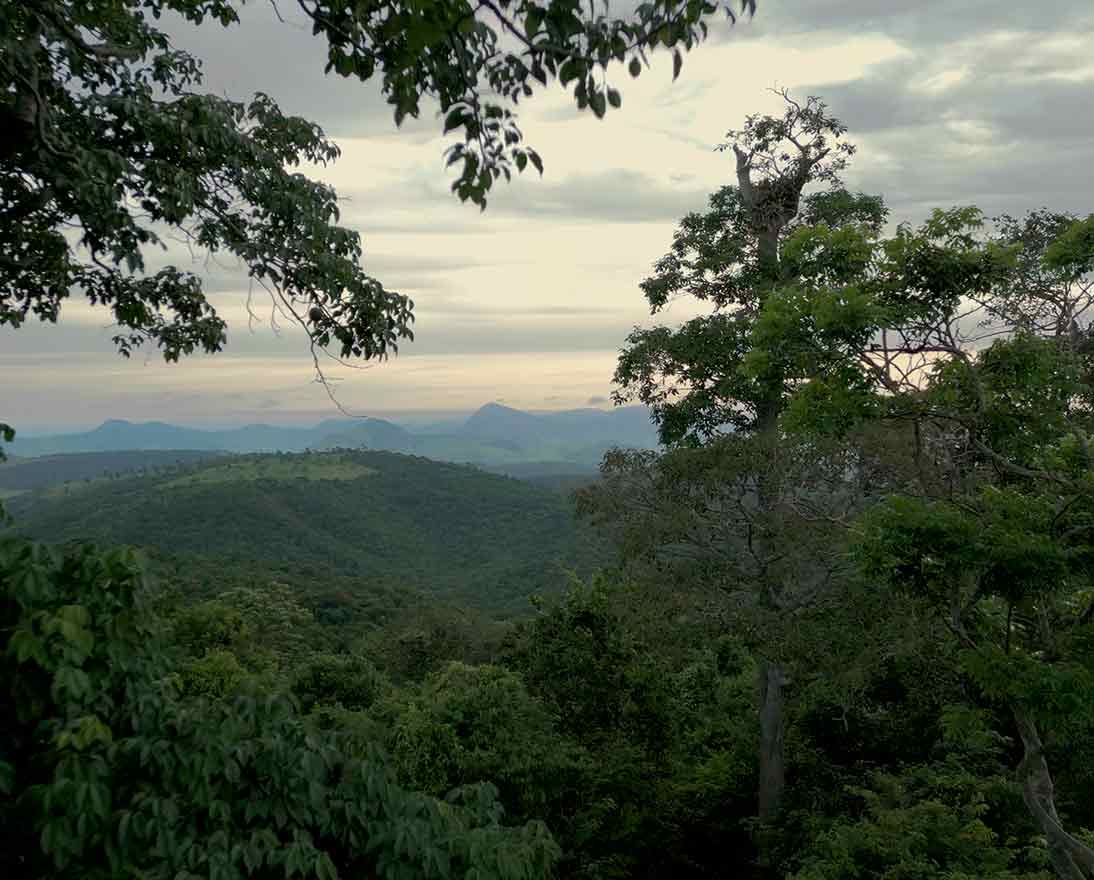
Understanding the psychology of climate risk
There’s a growing need for companies to mitigate climate risks. By listening, seeking to understand concerns, and helping to find solutions, Zurich is taking some of the heat out of the debate around global warming.
“I’ve had some very interesting, sometimes difficult conversations with people who say that global warming doesn’t exist, or that it’s some sort of conspiracy theory,” says John Scott. As Head of Sustainability Risk at the Zurich Insurance Group (‘Zurich’), Scott is familiar with the polemics surrounding such discussions. As an expert, his job is to put emotions aside and explain things that businesses can do to address relevant risks. Some might be climate skeptics.
“But the facts speak for themselves,” Scott says. “The planet is warming as we can observe from land ice melt with associated sea-level rise, retreating glaciers, melting permafrost and changes to patterns of extreme heat and cold. Not to mention changes to the jet stream, which have an impact on localization of severe weather.”
“Our message to customers with regard to climate is that there are clearly physical changes taking place that are likely to become more pronounced over time, which can affect them now and in the future,” says Scott. “Some changes are long-term, some are episodic, and some are more local in their impact. We can do things to help manage and adapt to these changes.”
The outlook is not all gloom and doom, he says, adding, “There are some bright spots out there, and opportunities. We have to grasp them and do it quickly.”
Risks perceived: extreme weather and disinformation
The latest Global Risks Report published in January 2024, based on a survey of a diverse group comprising nearly 1,500 academic, business, government, civil society and thought leaders, found that extreme weather was perceived as the biggest risk the world faces over the next 10 years.
Developed by the World Economic Forum (WEF) in collaboration with Zurich and Marsh McLennan, interestingly, the report identified misinformation and disinformation as the biggest risks over the next two years, when nearly three billion people – more than one-third of the world’s population – are expected to go to the polls.
Many factors such as demographic, ideological, self-perceptions and belief systems affect people’s attitudes to climate change. But a recent study by two academics found that, of all these factors, “political persuasion is by far the major correlate” of attitudes to climate change. That isn’t surprising, as the arguments for taking action to combat climate change are essentially political. On top of that, search engine and social media algorithms create ‘filter bubbles’ that reinforce whatever individuals might want to hear. These create a confirmation bias that can exacerbate polarization.
The economic impacts of not acting
According to NOAA’s National Centers for Environmental Information, 2023 was the hottest year on record. For those running a business, no matter one’s own beliefs and political affiliations, it might pay to consider the potential impact of weather extremes, and the consequences that weather extremes can have on the bottom line.
For one, there’s the cost of energy. For example, a prolonged heat spell in France in 2022 raised the temperature of river water used to cool nuclear power plants which led the plants to temporarily reduce power output. Climate can also have an impact on agriculture and food prices. In the U.S. in 2023, beef prices hit a record as a prolonged drought – reportedly the worst dry spell in over 1,000 years – made it difficult and more expensive to feed cattle.
Droughts and floods can also affect the prices that individuals – and taxpayers – must accept for insurance against crop losses. According to a study published in 2021 by three Stanford researchers, “global warming that has already occurred has contributed substantially to rising crop insurance losses in the U.S.” That included an estimated USD 27 billion in total losses in the U.S. from rising temperatures over the period of 1991 to 2017.
Shipping routes can also be affected, raising the cost of transporting raw materials and finished goods. In 2023, Panama’s rainfall was reported to be well below normal, which caused water levels in lakes that flow into its locks to plunge, leading authorities to restrict the number of vessels traveling through the Panama Canal, a major shipping route. On the Rhine, a main artery for Europe’s shipping industry, low water levels resulting from droughts created freight bottlenecks that caused the cost of shipping for German companies to spike in 2022. In that year, similar issues also affected the Mississippi River in the U.S., and the Yangtze River in China.
Tourist-dependent businesses may also suffer from climate change. As just one example, Mexico experienced loss of life and high property damage near the resort of Acapulco after Hurricane Otis struck in October 2023. The U.S. National Hurricane Center (NHC) described it as “the strongest landfalling hurricane on record in the eastern Pacific basin” since the NHC began forecasts in the region in 1988.
Insurance, the last line of defense
As part of Zurich Resilience Solutions (ZRS), Amar Rahman, Global Head of Climate & Sustainability Solutions, and his team of about 40 experts help businesses and other organizations around the world to assess risks, especially those related to climate. In the course of their work, they speak with people from all areas of organizations in the private sector and public sectors. That includes government officials, top executives in C-suites, and people managing local production facilities. Sometimes it takes some convincing, especially if those in charge of risks haven’t (yet) encountered extreme events first-hand. That includes people in factories and plants, who may base their judgements on personal experience.
“The risk appetite of managers, for example, at production facilities might be very subjective,” says Rahman. “You can visit a production site, and tell the manager, ‘A flood could happen here,’ and they’ll say, ‘I’ve been here for years. I’ve never seen a flood. And, anyway, we have pumps installed.’”
At that point, the ZRS climate resilience specialists might seek to impress on the plant manager that it only takes a single lightning strike to knock out power grids and cause pump stations to fail. “Through such scenarios, people are sensitized to the complexity and interaction between risks,” says Rahman.
Finding the right solutions for companies may also involve overcoming some skepticism. “It means making risks tangible to businesses and organizations, explaining the potential consequences, and the likelihood – even if it is a low likelihood – of the risk actually occurring,” says Rahman. “It comes down to whether managers are ready to be accountable and take responsibility for the consequences, if something did happen on their watch.”
It also comes down to psychology, and convincing people of the need to be pro-active, well before the discussion touches on insurance cover.
“We say to businesses, insurance is your last line of defense,” says Rahman. “You are transferring the residual risk. What we do, as insurers, is, not only take on this risk, but we need to work together with you to build up the lines of defense necessary to make the residual risk as small as possible and, therefore, affordable.”

Climate Resilience
Our Climate Resilience experts help you identify and manage climate risks, and prepare you for climate reporting.


